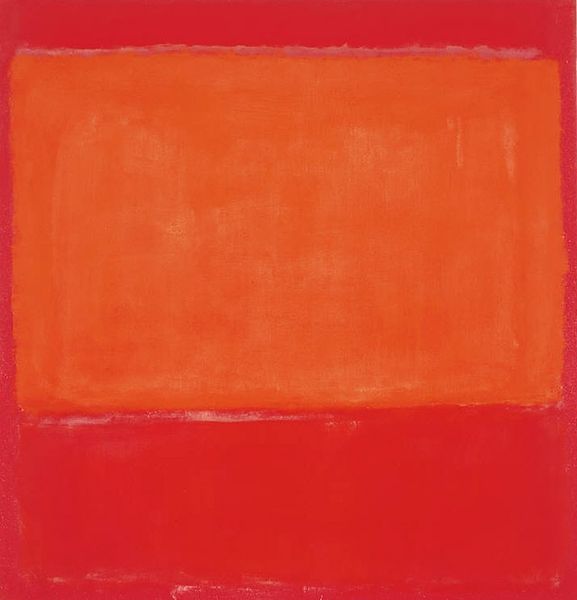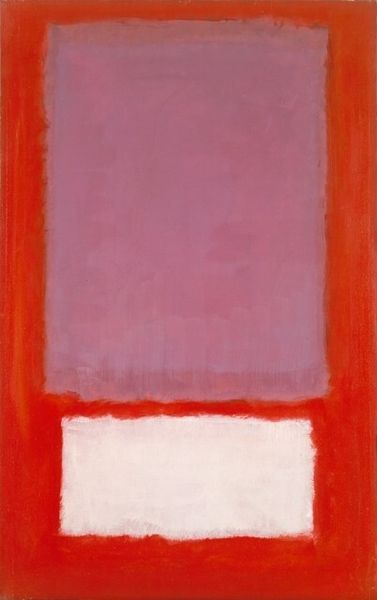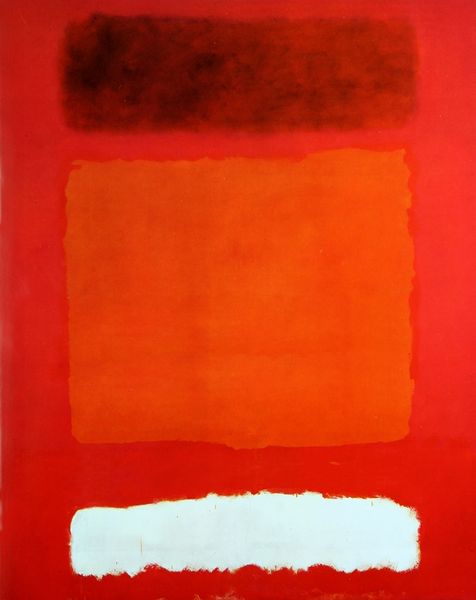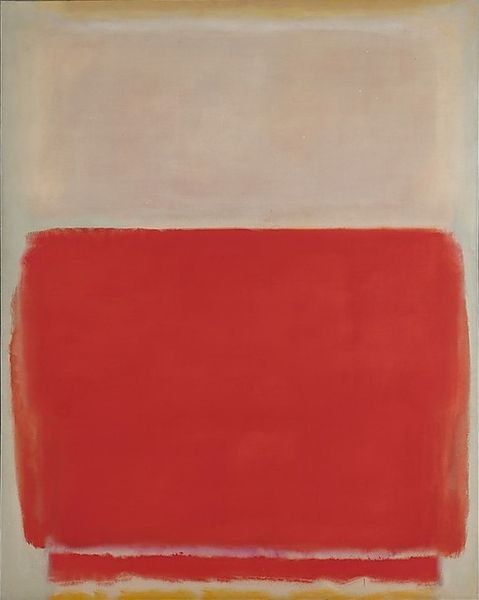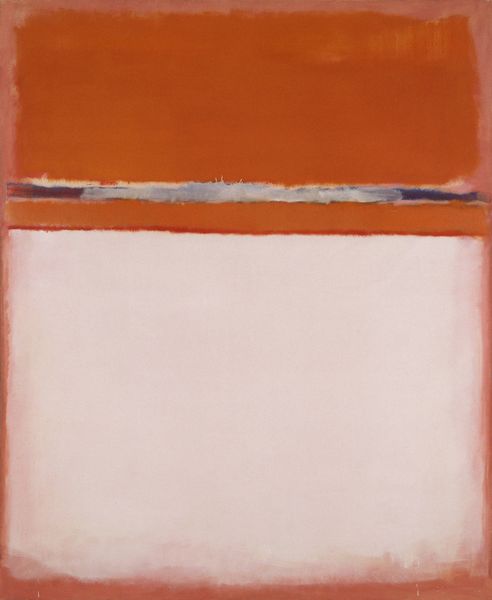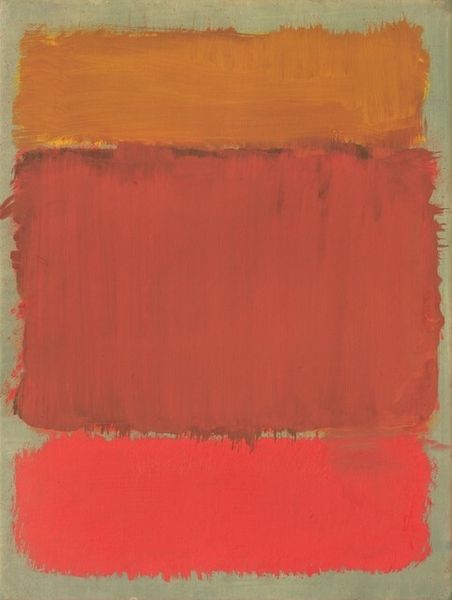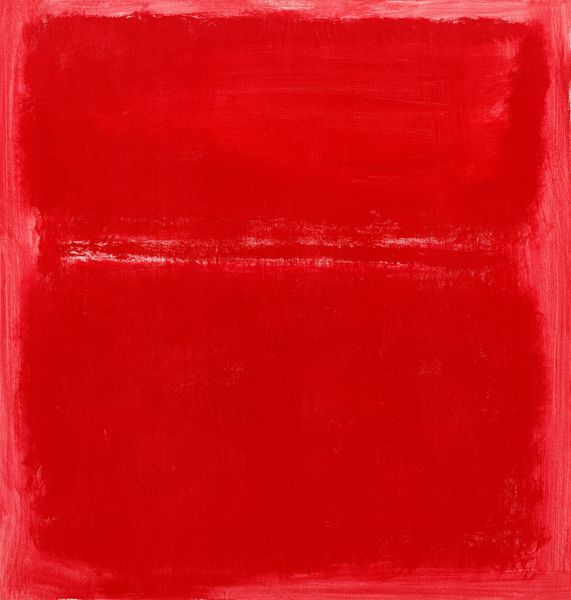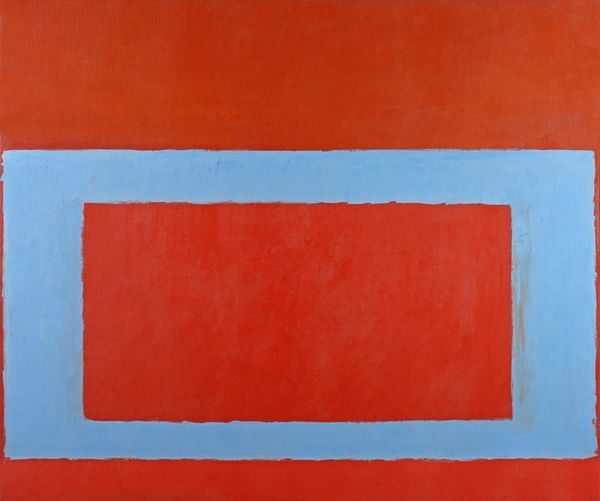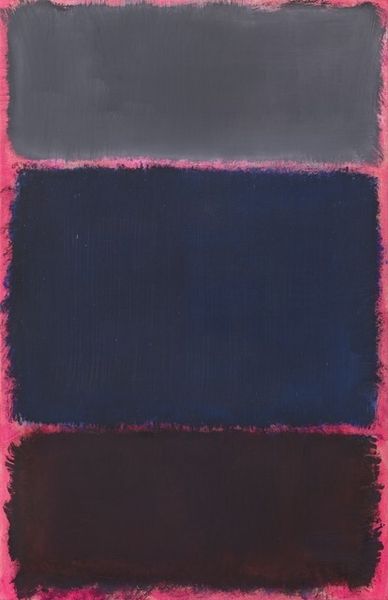
oil-paint
#
abstract-expressionism
#
abstract expressionism
#
non-objective-art
#
oil-paint
#
colour-field-painting
#
geometric
#
abstraction
#
abstract art
#
modernism
Dimensions: overall: 142.6 x 157.8 cm (56 1/8 x 62 1/8 in.)
Copyright: National Gallery of Art: CC0 1.0
Editor: Here we have Mark Rothko's Untitled from 1958, an oil painting featuring stacked rectangular forms in reds, pinks and whites. It gives the impression of vast planes, perhaps even the sky. What do you see in this piece? Curator: I see a culmination of process, and a breakdown of the hierarchy between fine art and craft. Look at the facture, the way Rothko builds up layers of thin oil paint. He is making something, in a tactile way, rather than depicting something. The act of applying paint becomes the subject itself. Editor: So you’re focusing less on symbolic meaning, and more on the materiality of the paint and the process of its application? Curator: Exactly! Consider also the social context: mass production and consumption were on the rise. Rothko's work, in a way, responds to that, shifting value from the representational image to the labor involved in its creation, and prompting contemplation on material reality in a consumerist society. Editor: Interesting! So, instead of a landscape or an emotion, he's presenting us with the evidence of its making – the raw materials and the artist's physical actions. Curator: Precisely. And by doing so, he is challenging us to think about what we value, what constitutes art, and the very means of production itself. Do you think that challenges your initial impression? Editor: I think it adds depth. I saw the mood, but now I see how the very physical creation of that mood carries meaning about value, production, and what we deem important. Curator: And perhaps it's precisely through that materiality that the emotional response is generated in the first place. It really makes you consider artmaking as more than just conveying of representation, doesn't it?
Comments
No comments
Be the first to comment and join the conversation on the ultimate creative platform.
